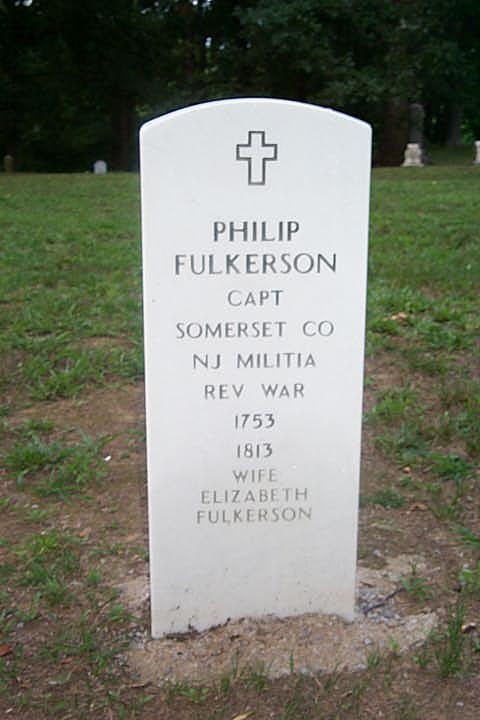Philip/Phillip FULKERSON
SAR Patriot #:
P-162779
The following information was assembled from numerous sources and cannot be used directly as proof of Qualifying Service or Lineage.
It is considered a research aid and is intended to assist in locating sources that can be used as proof.
State of Service: NJ
Qualifying Service: Captain
DAR #: A043202
Birth: abt 1755 / Somerset / NJ
Death: bef Aug 1813 / Ohio / KY
Qualifying Service Description:
- Captain, and Lieutenant Colonel: COL Middaugh, 2nd Batt., Somerset Co. Militia, 1777-1780
- Also, Private: CAPT John Sebring, 1st Batt., Somerset Co. Militia
Additional References:
- Stryker, Official Register of the Officers and Men of NJ in the Rev War, pg 391, 600
- Will of Philip Fulkerson Jun. 1813 Ohio Co, KY
- Meyer, Bohrer-Borah-Borer 1956-1965, pg 221-222
- The Ohio County Times, Hartford, KY
Spouse: Elizabeth XX;
Children: Fulkard; Rachel; Jacob B;
Members Who Share This Ancestor
| Date Approved | Society | ACN | SAR Member Info | Lineage via Child | View Application Detail | |
|---|---|---|---|---|---|---|
| 1976-02-08 | IL | Unassigned | Fred Hallam (112438) | Fulkard | ||
| 1976-12-30 | IL | Unassigned | Arvel Hallam (112429) | Fulkard | ||
| 1977-01-21 | IL | Unassigned | Martin Andrew Hallam (112431) | Fulkard | ||
| 1978-01-21 | IL | Unassigned | Thomas Lee Hallam (112430) | Fulkard | ||
| 1992-11-20 | OH | Unassigned | David Lowell Gallit PhD (138793) | Fulkard | ||
| 2007-03-30 | IL | 28206 | Christopher Aaron French (169069) | Fulkard | ||
| 2010-05-25 | IL | 38936 | Norman Gail Dickey (172979) | Rachel | ||
| 2012-01-11 | AZ | 45759 | Jerry Lee Bowen Sr (181976) | Jacob | ||
| 2018-03-21 | KY | 80038 | Matthew James McDonald (206784) | Fulkard |
Location:
Beaver Dam / Ohio / KY / USA
Find A Grave Cemetery #:
Marker Type:
vertical VA
SAR Grave Dedication Date:
Comments:
- Per Find-A-Grave memorial, this stone is a cenotaph and the actual place of his burial is unknown
- Headstone photos published with permission of Compatriot Norman Dickey
Directions to Cemetery / Gravesite:
Located on the east side of South Main St, near the intsection with Reynolds St

